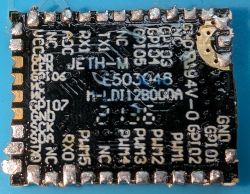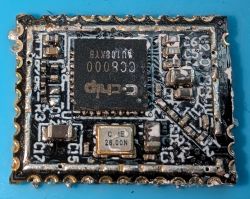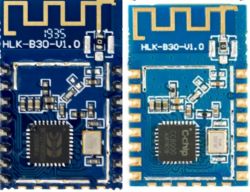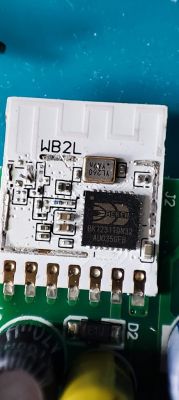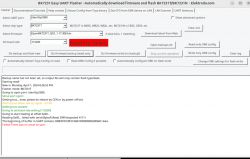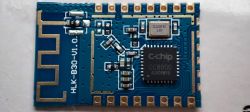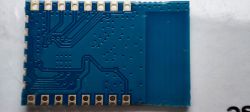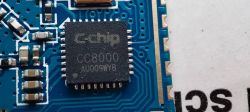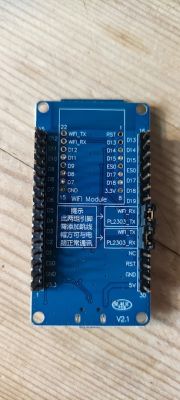Download the tool here
https://github.com/tuya-cloudcutter/tuya-cloudcutter
Before using the script, verify your device tuya-firmware version using the tuya/smartlife app
and download the correct firmware for your device chip (T or N). The chip would not boot if wrong firmware version is flashed on it and it would require using serial method to re-flash it again with the correct firmware.
Steps:
1. Start the script (run_flash.sh)
2. Select the firmware that you have downloaded earlier to the custom-firmware directory.
3. Select your profile that matches with the tuya-firmware version.
4. Reset your device to AP mode (if profile matches, A-xx prefix would show up after it gets reset the 2nd time)
5. Reset your device again for the OTA flashing,
For no (3), if your device is not supported, then you would need to make dump of your device firmware using bk7231tools and submit a github request for profile creation.
There's also Lightleak app that can obtain firmware dump wirelessly. I've had some success with T device but not N yet
![[Tutorial] Flashing OpenBK via OTA using tuya-cloudcutter [Tutorial] Flashing OpenBK via OTA using tuya-cloudcutter](https://obrazki.elektroda.pl/4526555600_1670946583_thumb.jpg)
Alternatively you could still generate your own profile using hexomatic with this batch script
https://github.com/tuya-cloudcutter/tuya-cloudcutter
Before using the script, verify your device tuya-firmware version using the tuya/smartlife app
and download the correct firmware for your device chip (T or N). The chip would not boot if wrong firmware version is flashed on it and it would require using serial method to re-flash it again with the correct firmware.
Steps:
1. Start the script (run_flash.sh)
2. Select the firmware that you have downloaded earlier to the custom-firmware directory.
3. Select your profile that matches with the tuya-firmware version.
4. Reset your device to AP mode (if profile matches, A-xx prefix would show up after it gets reset the 2nd time)
5. Reset your device again for the OTA flashing,
For no (3), if your device is not supported, then you would need to make dump of your device firmware using bk7231tools and submit a github request for profile creation.
There's also Lightleak app that can obtain firmware dump wirelessly. I've had some success with T device but not N yet
![[Tutorial] Flashing OpenBK via OTA using tuya-cloudcutter [Tutorial] Flashing OpenBK via OTA using tuya-cloudcutter](https://obrazki.elektroda.pl/4526555600_1670946583_thumb.jpg)
Alternatively you could still generate your own profile using hexomatic with this batch script
Spoiler:
save as do_magic.bat
On windows rename full dump .bin to device-manufacturer_device-name.bin and run it like this
It should generate these files
![[Tutorial] Flashing OpenBK via OTA using tuya-cloudcutter [Tutorial] Flashing OpenBK via OTA using tuya-cloudcutter](https://obrazki.elektroda.pl/2125757700_1670946160_thumb.jpg)
Copy the last two JSON files to a subdirectory in device-profiles.
Rename each to device.json and profile.json, respectively
And execute run_flash.sh <wifi adapter name> <your subdirectory name>
bk7231tools dissect_dump -e -O %1 %1.bin
pushd %1
..\haxomatic.py %1_app_1.00_decrypted.bin
..\parse_storage.py %1_storage.json
..\parse_app.py %1_app_1.00_decrypted.bin
mkdir extracted
move *.txt extracted\
popd
assemble_universal.py %1save as do_magic.bat
On windows rename full dump .bin to device-manufacturer_device-name.bin and run it like this
do_magic.bat device-manufacturer_device-nameIt should generate these files
![[Tutorial] Flashing OpenBK via OTA using tuya-cloudcutter [Tutorial] Flashing OpenBK via OTA using tuya-cloudcutter](https://obrazki.elektroda.pl/2125757700_1670946160_thumb.jpg)
Copy the last two JSON files to a subdirectory in device-profiles.
Rename each to device.json and profile.json, respectively
And execute run_flash.sh <wifi adapter name> <your subdirectory name>
Cool? Ranking DIY




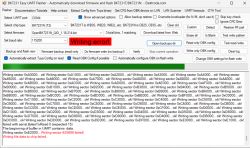


![[Tutorial] Flashing OpenBK via OTA using tuya-cloudcutter [Tutorial] Flashing OpenBK via OTA using tuya-cloudcutter](https://obrazki.elektroda.pl/5024679100_1671301299_thumb.jpg)
![[Tutorial] Flashing OpenBK via OTA using tuya-cloudcutter [Tutorial] Flashing OpenBK via OTA using tuya-cloudcutter](https://obrazki.elektroda.pl/8127999000_1671301425_thumb.jpg)
![[Tutorial] Flashing OpenBK via OTA using tuya-cloudcutter [Tutorial] Flashing OpenBK via OTA using tuya-cloudcutter](https://obrazki.elektroda.pl/2463663700_1677015151_thumb.jpg)
